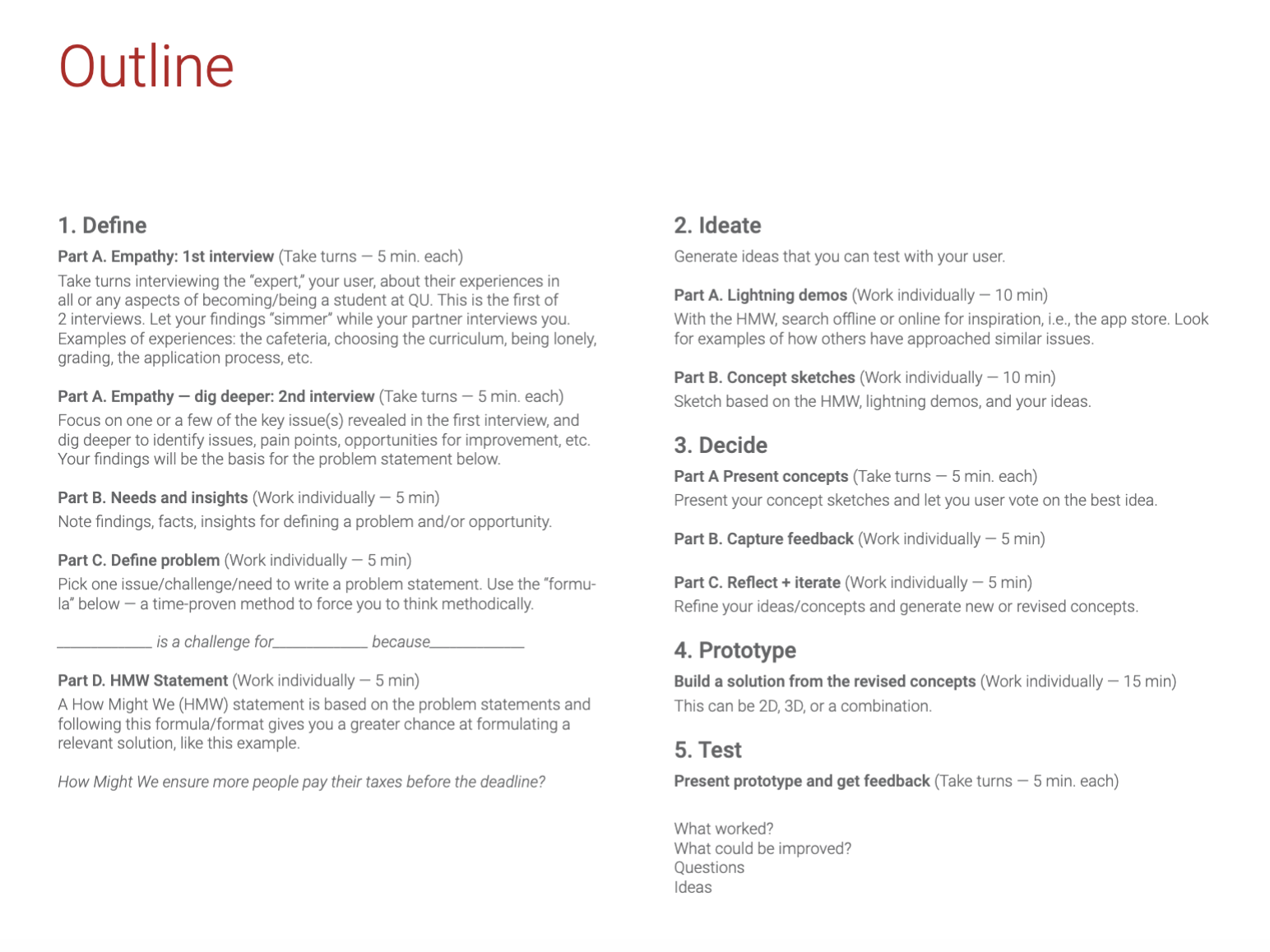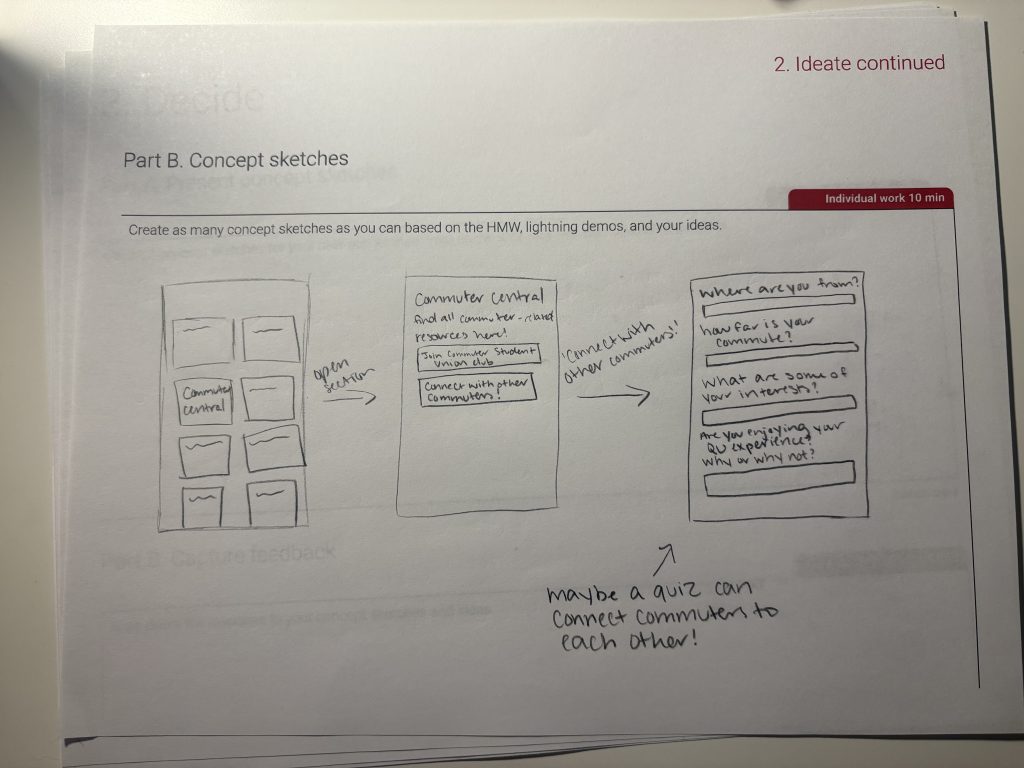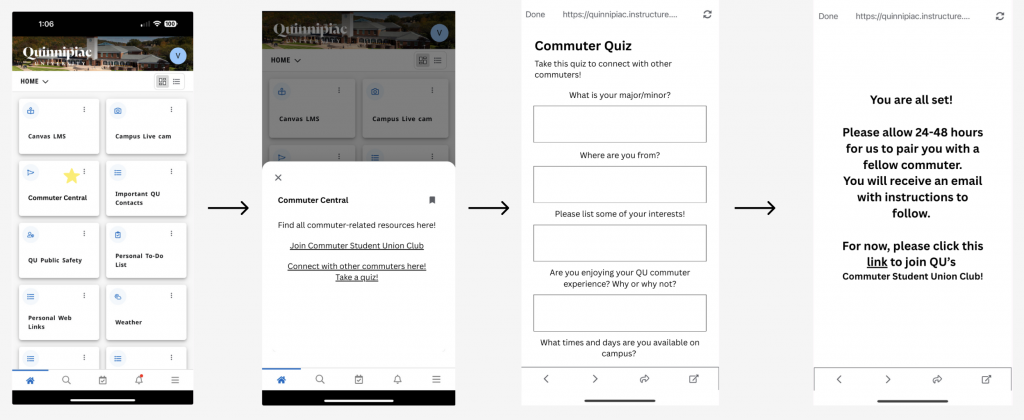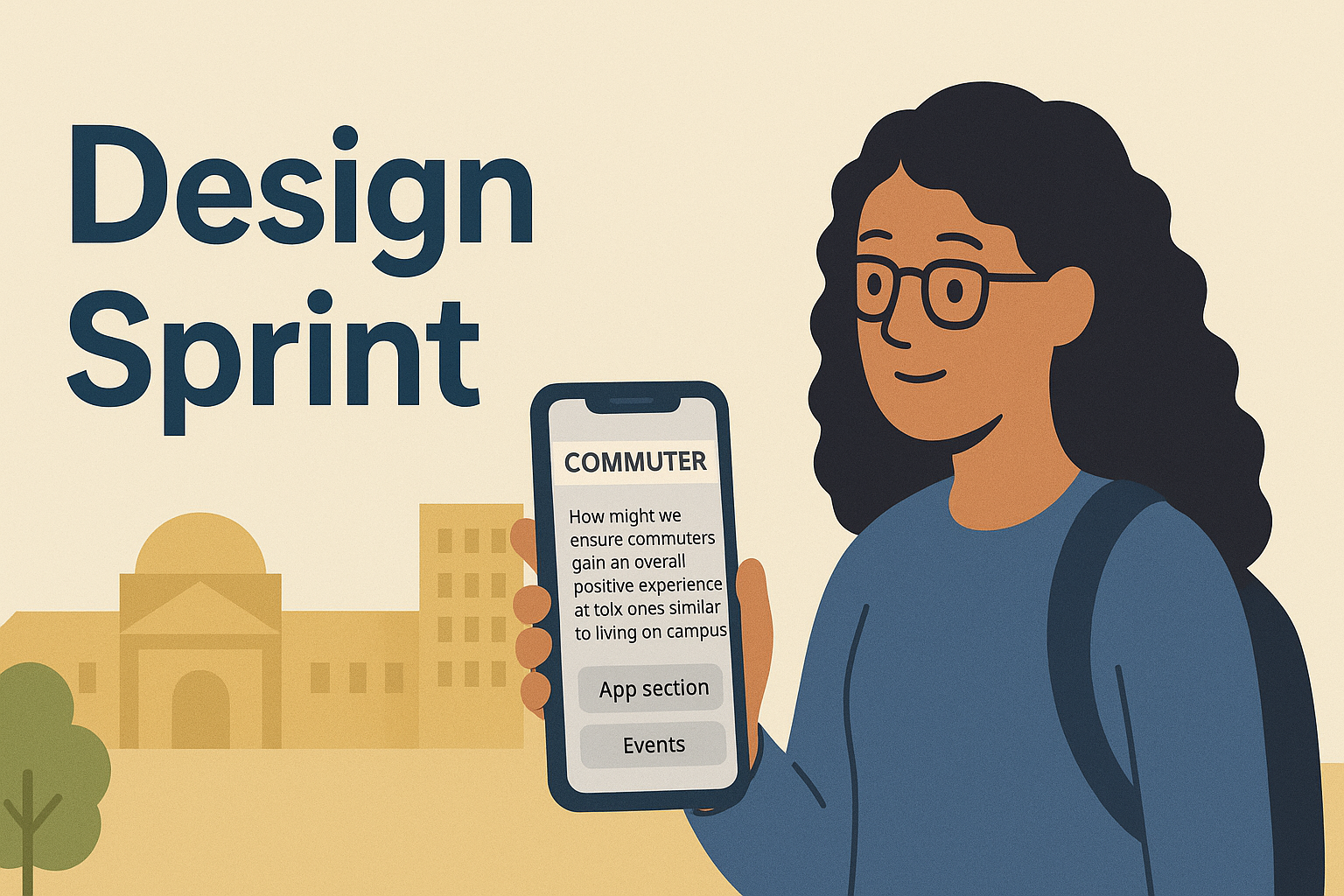I just recently learned about design thinking, an innovative way of thinking about user experience.
Now, when I first heard the term design sprint for an assignment, I’ll admit I felt a little intimidated. The idea of compressing brainstorming, problem-solving, and prototyping into such a short amount of time sounded like a challenge. But once I actually went through the process with my partner, I realized how powerful and energizing it can be.
Our assignment was simple in theory: schedule a two-hour block, print out the worksheet, and work through the sprint together. But what unfolded during that time was an exciting deep dive into creativity, collaboration, and problem-solving.

Step One: Defining the Problem
First, we began by mapping out common college issues. From dining to overwhelming workloads, in just five minutes we dived into as many topics as we could think of. In a second interview, we decided to dig deeper into the issues we talked about, to which I chose my issue, commuter struggles. While distance wasn’t an issue, social connection was. Many commuters have trouble making friends, since most clubs start late in the evening (9–11 p.m.), when many are already headed home. Balancing a heavy workload, internships, and commuting time also means there’s less energy for late-night events. The core problem we defined was simple but important: commuters struggle to connect and form relationships on campus due to conflicting schedules and limited opportunities.
Diving into the problem even further, I brainstormed any potential issues and findings to think of potential solutions. This is when I created my problem statement:
Making friends and connecting with fellow students is a challenge for commuters because of conflicting schedules, late clubs, and not enough time spent on campus.
As well as my HMW statement, which overall defines my problem:
How might we ensure commuters gain an overall positive experience at QU, ones similar to living on campus?
Creating both my problem question and HMW statement allowed me to clearly define my problem, and move onto the next step!
Step Two: Ideating Solutions
In this step, I was able to further define my solutions for the selected issue. I first began researching inspiration to find previous examples of potential solutions for this issue. After 10 minutes of researching, I came across many solutions made by universities to help elevate commuter experiences; from dedicated lockers and lounges to networking events to mentorship opportunities, universities have incorporated many initiatives in helping commuters enjoy their college experiences.
My next step was to create concept sketches of my potential solutions, all based on my HMW, lightning demos, and ideas.

These sketches mainly focused on a section within the QU app, that allows commuter students to find all commuter-related resources, as well as take a quiz to connect commuter students with one another based on their interests.
Step Three: Decide
In this step, we presented our concept sketches to each other, to receive feedback and any potential newer ideas. My partner enjoyed the solution, as she said it was effective for solving this issue. She also expressed some small feedback to enhance the experience, like adding more general questions to the quiz, such as asking for majors and the days or times available on campus. She also asked me about what happens after completing a quiz, which I hadn’t thought of yet!
Now, it was time to refine our ideas, and generate new or revised concepts based on the test feedback.
Step Four: Prototype
When revising, I made sure to include all of my partner’s feedback. Ultimately, using Figma, I ended up creating much more refined sketches, and showed exactly how the section and quiz would look in the QU app.

Step Five: Test
Now, it was time to present our prototypes, and receive feedback from one another.
In this step, my partner expressed her agreement towards my idea, as it was “very easy to follow along and very straightforward”. When sharing our feedback, she noted how the first screen invites the user to talk with other commuters, but the final screen says you’ll be paired with just one. She also noted how putting commuters together in a chat with a handful of other commuters could be more beneficial instead of just one on one, for both the commuters and their busy schedules. Besides that, she really enjoyed the idea!
Some of the final revisions I made included:
- Added questions to the quiz section.
- After the quiz is sent, commuters are put into a small chat with other commuters, all based on their information, availability, and interests.
- Students will also be put into a large group chat with the Commuter Student Union Club (to boost the club’s numbers!)
All in all, this fast-paced sprint showed me how valuable structured design thinking can be, especially when tackling real student challenges. In just a few hours, we went from a broad problem to a tested prototype with clear revisions. Most importantly, the process underscored that small design changes—like tweaking an existing app—can have a big impact on inclusion and campus life. For commuters, a digital hub could make the difference between feeling isolated and truly belonging.

Leave a Reply